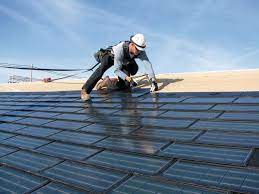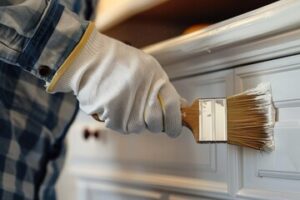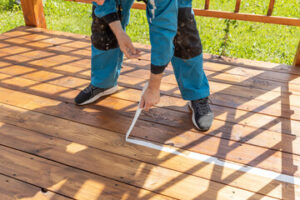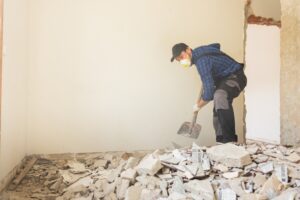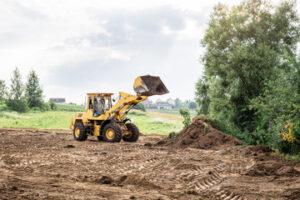Effective marketing is a must for contractors, but it’s often time-consuming and requires expertise. A skilled digital agency can provide a complete marketing solution that eliminates the need to manage a separate team.
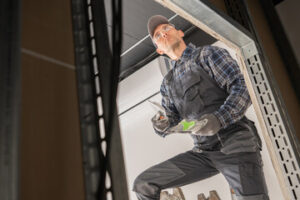
Effective strategies include social media, search engine optimization and paid advertising. Client feedback also helps to refine services and enhance marketing messages. Keep reading the article below to learn more about Internet Marketing For Remodeling Contractors.
Content marketing is a powerful way for remodeling contractors to build trust, establish expertise, and generate leads. It involves creating valuable blog posts, videos, and social media updates that resonate with your target audience. These content assets are then shared across your digital channels to drive awareness and engagement, ultimately leading to profitable customer action.
For example, by sharing before-and-after photos of past remodeling projects, you can highlight your capabilities and position yourself as a trustworthy resource for homeowners who are in the early stages of their home improvement project. This approach also helps you rank higher in local searches, establishing your brand as a leading remodeling contractor in your service area.
Additionally, by leveraging social media platforms like TikTok and YouTube to share client testimonials and video content about your remodeling process, you can further establish yourself as an expert in your field. This tactic can help you attract new clients and build trust with existing ones by showcasing your dedication to your work.
PPC Campaigns Offer Immediate Visibility
By utilizing well-managed PPC campaigns, you can quickly put your remodeling company in front of qualified home improvement leads by targeting specific demographics and interests through Google AdWords and Facebook. In addition to generating immediate leads, these campaigns can also provide valuable insights into your audience and help you optimize digital marketing strategies for the best return on investment.
Once you’ve generated leads, it’s important to nurture them effectively by sharing project updates, remodeling tips and inspiration, and exclusive promotions. Email marketing is an effective tool for accomplishing this, and it can lead to improved conversion rates for your remodeling business in the long run. Additionally, by using analytics platforms like Google Analytics, you can measure and analyze your marketing efforts to ensure they’re aligned with your business goals.
Social Media Marketing
In the digital age, potential clients are researching contractors online long before they pick up the phone. This change in consumer behavior necessitates that home remodelers have a well-defined Internet marketing strategy. With local SEO, social media marketing, and paid advertising as part of a comprehensive digital marketing ecosystem, contractors can ensure that their websites and online presence are highly visible to potential clients in their service area.
A dynamic contractor website that showcases project photos and client testimonials can boost a remodeling business’ credibility. Additionally, creating video content and leveraging social media platforms like Instagram and TikTok can attract new leads by demonstrating the quality of work that can be expected from a remodeling professional. Moreover, implementing a structured system of customer feedback can encourage referrals and nurture lasting relationships with satisfied customers.
The Internet has exploded in popularity, and consumers are now using it to research and compare local businesses. According to Google, 6 million searches occur on the search engine every minute, and 46% of those include a local intent. These statistics indicate that there is a significant opportunity for local businesses to leverage Google’s ad products to attract new clients.
For example, Google’s “Google Guaranteed” ads appear above organic search results and traditional PPC ads and allow for precise targeting based on demographics, interests, and behaviors. They are also more cost-effective than other ad types and require minimal ongoing management.
Other digital marketing tactics include partnering with local business networks and influencers to share content, and providing expert-led workshops and seminars to increase brand awareness and build trust among prospective clients. Lastly, engaging in direct outreach to generate new leads by sending postcards and emails can boost a contractor’s marketing efforts.
Hiring a top-tier digital marketing agency that understands the needs of contracting professionals can greatly improve a remodeling company’s online visibility and bottom line. By utilizing a holistic approach that includes a dynamic website, local SEO, social media marketing, and email marketing, a digital marketing agency can help contractors grow their business by connecting them with qualified leads.
Local SEO
Local SEO is a digital marketing strategy that optimizes a website to rank higher in search engine results pages (SERPs) for searches made by people located in a specific geographic area. It’s an essential tool for businesses that rely on local customers, such as remodeling contractors. Using local SEO tactics, you can target local searchers and attract new business without the need for costly advertising campaigns.
To improve your local SEO, it’s important to focus on the following areas:
Optimize Your Google Business Profile
The most effective way to enhance your local SEO is by optimizing your Google My Business (GMB) profile. This includes adding accurate information, photos, and videos, as well as ensuring that your NAP (name, address, phone number) is consistent across online platforms. It’s also helpful to encourage happy customers to leave reviews of your business on Google and other review sites.
Boost Your Local Search Visibility
Your local search visibility is the most important factor in attracting leads from your geographic area. If you’re not showing up in the map pack or below it, you’re missing out on a large percentage of your potential customer base. To improve your local search visibility, make sure to include relevant keywords in your site content, title tags, meta descriptions, and HTML source code. Additionally, use local keywords in your blog posts and landing pages to signal to search engines that you offer services in a particular area.
Focus on Local Service Pages
To further boost your local SEO, create dedicated pages on your website for each of the services you offer in a given area. These pages can help you rank for more keyword-focused searches, as well as position yourself as a subject matter expert in your niche. Additionally, by organizing your services into separate pages, you can create unique landing pages for each one, which can be a great way to rank for long-tail keyword phrases.
In addition to these SEO tactics, it’s also important to regularly update your GMB, monitor search engine results, and measure your performance over time. This allows you to adjust your digital marketing strategy as needed and ensure that you’re always getting the best results possible for your investment.
Paid Advertising
Online marketing can be a powerful, cost-effective tool for general remodeling contractors to generate leads and convert them into satisfied clients. It’s important to implement comprehensive online lead generation strategies to maximize client conversions and establish a reputable presence in the local market. Valuable customer insights, SEO, and automated tools for capturing and qualifying leads enable business owners to develop targeted campaigns that resonate with the needs of potential clients.
Effectively marketing a remodeling contracting company requires a combination of tactics and a keen eye for detail. The right website, content, and visuals highlight your expertise in a way that inspires trust among prospective clients. A professional, search-optimized website showcases your work, includes clear calls to action, and incorporates local SEO strategies to increase visibility. Optimized content addresses common client questions and bolsters credibility by demonstrating your knowledge of remodeling trends.
Networking and establishing local connections is another important marketing strategy for contractors. Developing partnerships with local hardware stores, home design centers, and other businesses can generate referral pathways that extend your reach. Sharing personal anecdotes and testimonials can also forge genuine connections with potential clients. Highlighting client successes in marketing materials, including before-and-after photos of projects, cultivates a sense of authenticity and inspires confidence in future homeowners.
Paid advertising is a reliable internet marketing tactic for home remodeling companies when implemented strategically. Identifying your ideal client, choosing the right platforms and audiences, and experimenting with different elements of your campaign can significantly reward your investment.
Achieving a steady stream of quality remodeling leads is vital for maintaining a thriving contractor business. Applying the best online marketing practices can help you attract more qualified leads, convert them into paying clients, and achieve sustained growth in the competitive remodeling industry.
